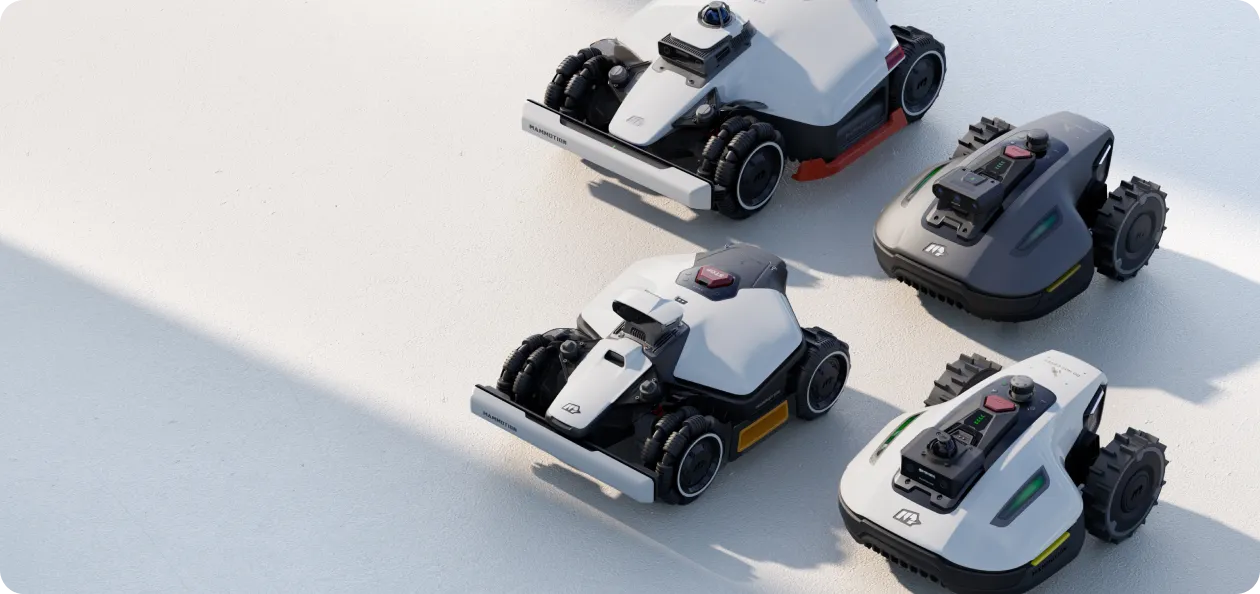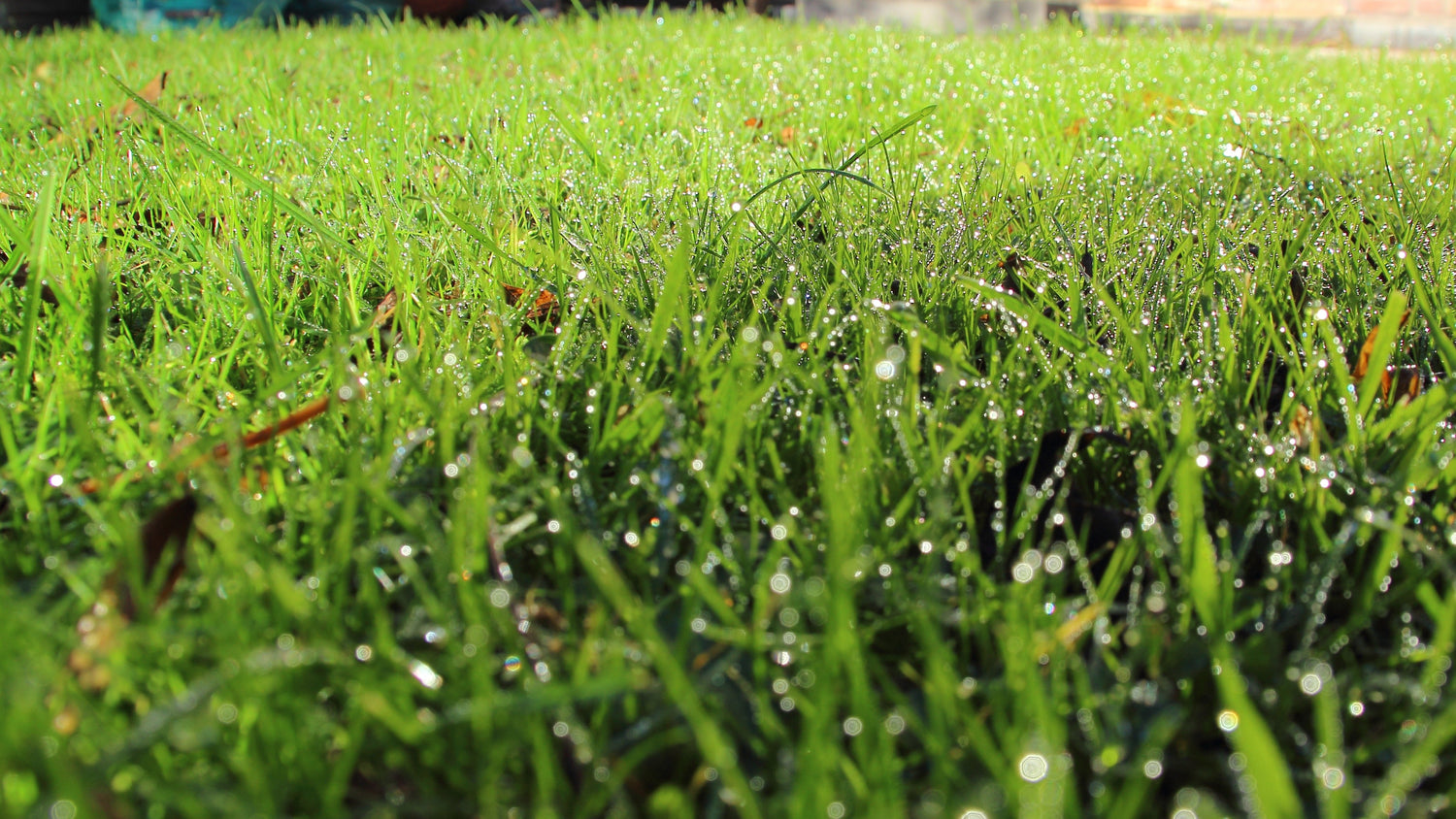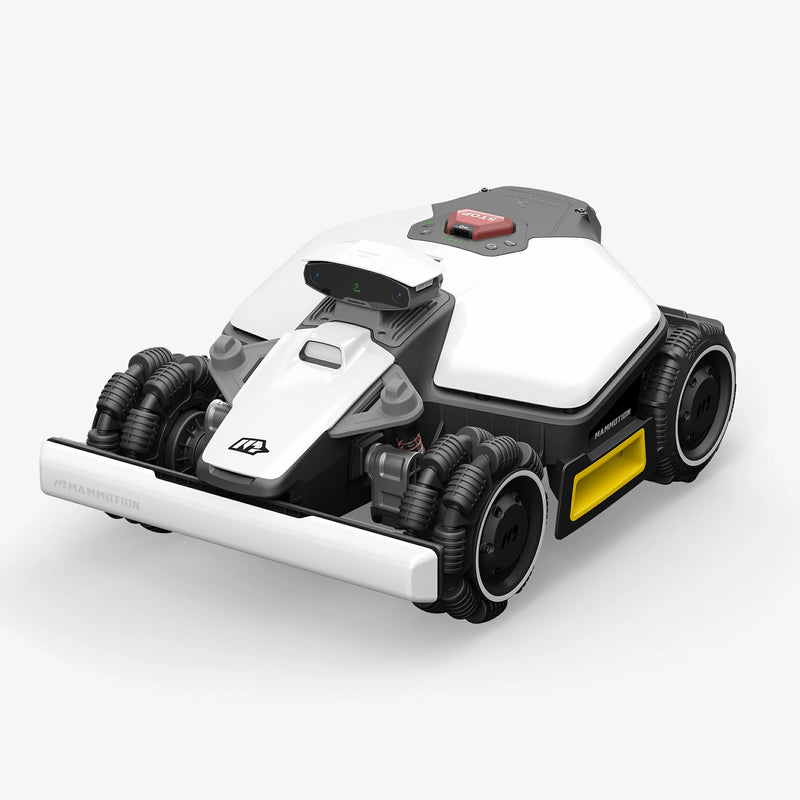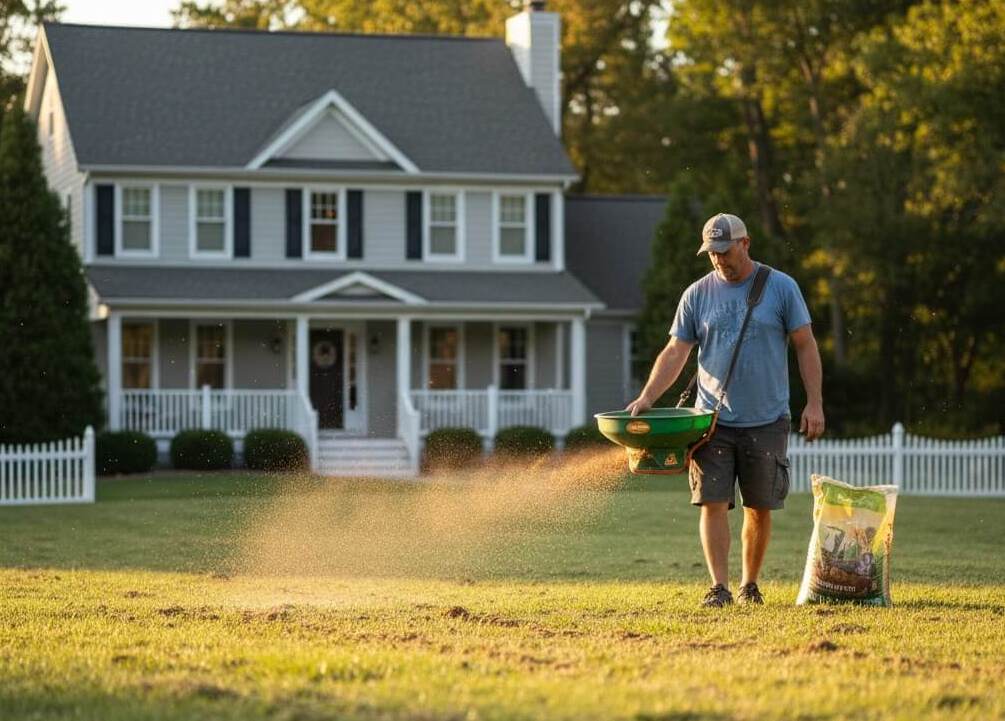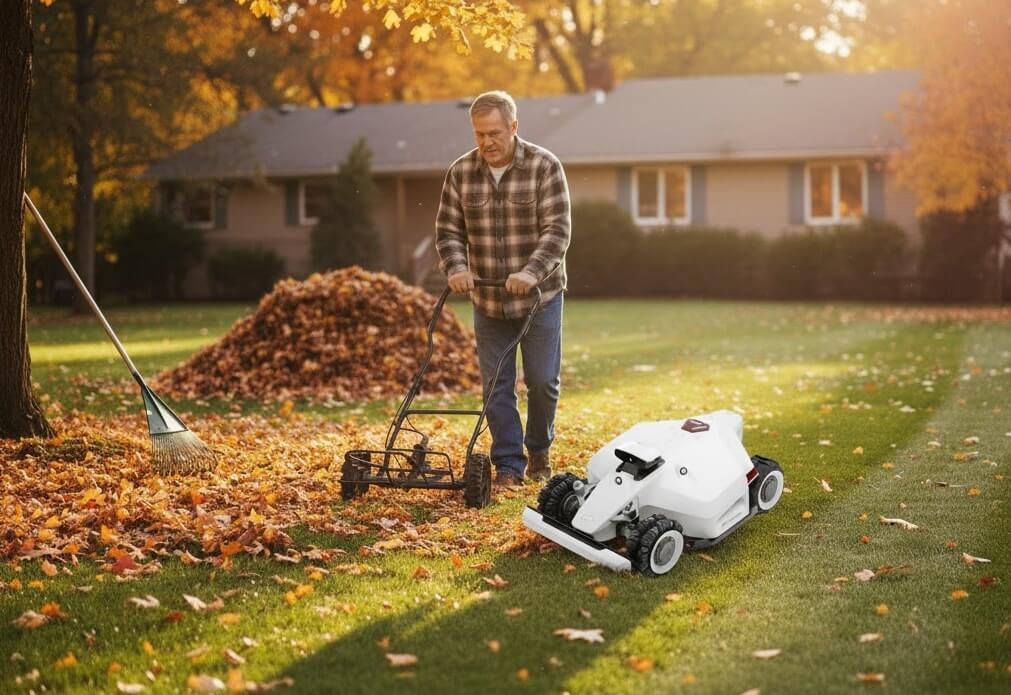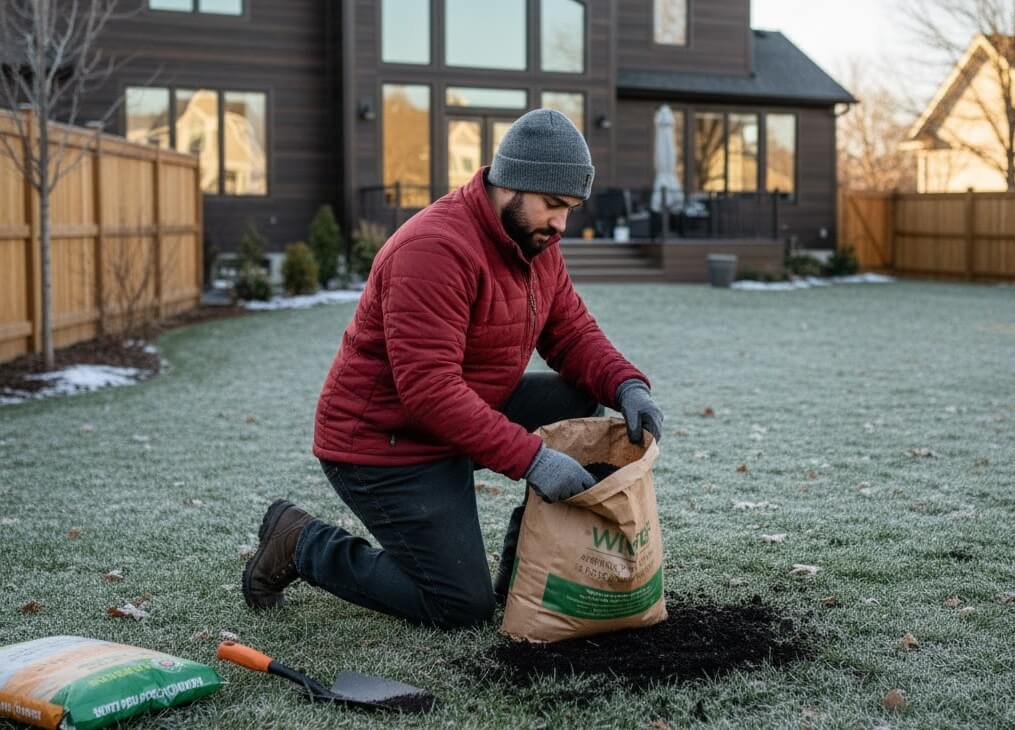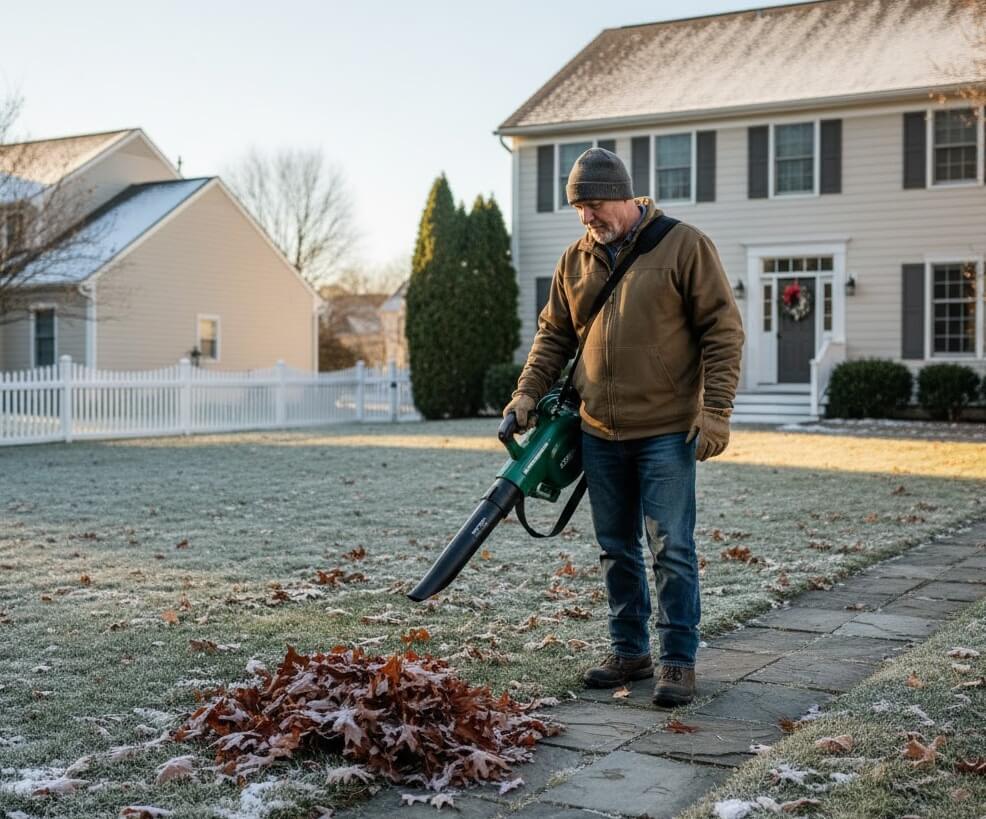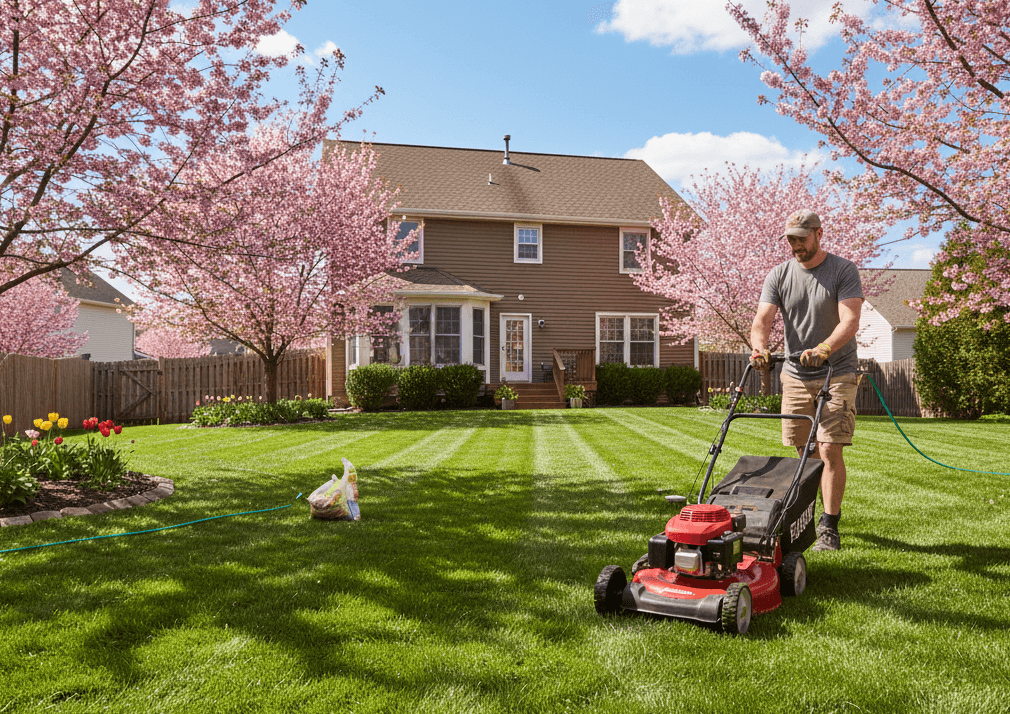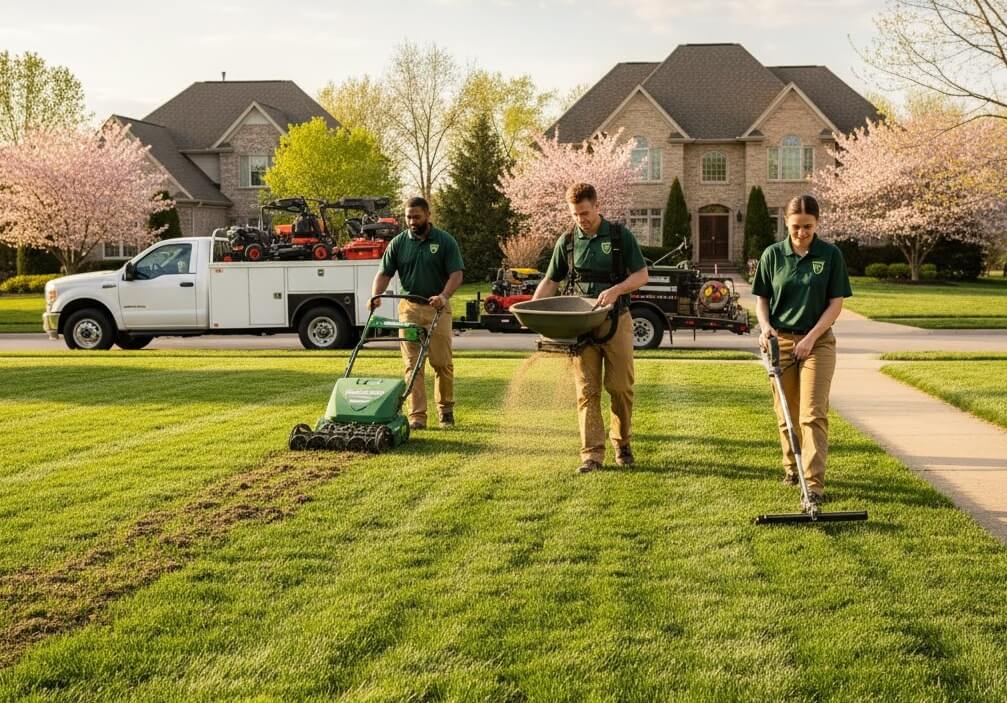You wake up, coffee in hand, ready to check one thing off your weekend to-do list: mowing the lawn. But then you step outside and realize — the grass is still wet from overnight rain or morning dew. You hesitate and ask yourself, can I mow wet grass? Or maybe even, can I mow the lawn when the grass is wet?
It’s a question every homeowner eventually faces, especially during spring and early summer when rainfall is frequent and growth is fast. You may be tempted to go ahead and mow anyway — after all, time is tight and the lawn is long. But is it really safe for your lawn and your equipment?
In this article, we’ll break down the risks of mowing wet grass, when it might be okay to do so, and what lawn care professionals recommend. Whether you’re wondering can I mow grass when wet or simply trying to avoid mistakes, here’s what you need to know before you roll out that mower.
Is It Bad to Mow Wet Grass?
The short answer is yes — mowing wet grass is generally not recommended. While it might not seem like a big deal, cutting your lawn when it's still wet can cause a number of problems, both for your grass and your mower.
1. Poor Cutting Quality
When grass is wet, the blades tend to bend over instead of standing upright. This makes it harder for your mower to cut cleanly. Instead of a crisp trim, you’ll likely end up tearing the grass, which can stress the plant and lead to frayed, brown tips.
2. Increased Risk of Lawn Disease
Wet grass and damp soil create ideal conditions for fungal diseases. When you mow a wet lawn, the mower can spread spores across the turf, increasing the chances of problems like brown patch, dollar spot, or other turf diseases — especially in warm, humid climates.
3. Clumping and Clogging
Wet clippings tend to stick together, creating large clumps that can smother parts of your lawn and prevent sunlight or airflow. These clumps can also get stuck under your mower deck, reducing its efficiency and potentially damaging the blades or engine.
4. Soil Compaction
When the ground is soft from rain or heavy dew, the weight of your mower (especially riding or commercial units) can compact the soil. Compacted soil restricts root growth and limits water and nutrient absorption, leading to long-term lawn health issues.
In short, while you can mow wet grass, doing so is rarely worth the risks. The results are often messy, unhealthy for the turf, and potentially costly in terms of mower maintenance. It’s almost always better to wait until the lawn has dried out — not just on the surface, but also within the upper layer of the soil.
What Happens If You Mow a Wet Lawn?
If you decide to mow the lawn while it's wet — whether due to time pressure or simply not realizing the risks — several things can go wrong. Here’s a closer look at the potential outcomes, based on both turf science and practical field experience.
1. Uneven Cuts and Turf Damage
Wet grass doesn’t stand upright like dry grass. As a result, the mower blade may miss sections or tear the blades unevenly. Over time, this can weaken your lawn’s appearance and health. Torn grass heals more slowly and becomes more vulnerable to disease, pests, and stress from heat or drought.
2. Spreading Fungal Diseases
Moist conditions are a breeding ground for turf fungi. When you mow wet grass, especially repeatedly, you may unintentionally spread fungal spores across the yard. Common lawn diseases like leaf spot, red thread, and brown patch thrive in damp, cut foliage — especially if clippings are left behind in piles.
3. Clumps That Smother Grass
Instead of dispersing cleanly, wet grass clippings often form heavy clumps. These clumps sit on top of the turf, block sunlight, reduce airflow, and can lead to yellowing or dying patches. If not raked up afterward, they can also promote further moisture retention — and more fungal growth.
4. Damage to Equipment
Mowing wet grass puts extra strain on your lawn mower. Wet clippings can clog the mower deck, dull the blades faster, and even cause engine overheating in severe cases. For electric mowers, the risk is higher — water exposure can lead to short circuits or electrical hazards if the equipment isn't rated for wet use.
5. Safety Hazards
Wet lawns can be slippery — especially on slopes — increasing the risk of slipping or losing control of the mower. For riding mowers, this can pose a serious safety issue. Reduced traction may also leave ruts in soft soil, causing long-term damage to your lawn's surface.
Anyway, you can mow wet grass — but the result is often a combination of torn turf, mower trouble, and more problems than it solves. Unless absolutely necessary, it’s best to wait for drier conditions.
When Is It Safe to Mow Wet Grass?
Although mowing a wet lawn is generally discouraged, there are situations where it may be necessary — and in some cases, manageable. If you're wondering “can I mow the grass when it’s wet if I have no choice?” the answer is yes, but with caution and only under specific conditions.
Here’s when mowing wet grass is less risky and how to minimize potential damage:
1. The Grass Is Damp, Not Soaked
If the lawn is slightly damp from morning dew or light overnight moisture — and not saturated from heavy rain — mowing is more manageable. You can test this by walking across the lawn: if your shoes stay mostly dry and you don’t sink into the soil, it may be okay to proceed.
2. The Soil Is Firm
A key factor is the condition of the soil beneath the grass. If the ground is firm and not soggy, there's less risk of soil compaction, rutting, or mower traction loss. Avoid mowing immediately after rainfall or irrigation.
3. You Use the Right Equipment
A sharp mower blade is essential — it reduces tearing and improves cut quality on damp grass. High-lift blades and side-discharge systems can also help reduce clumping. If you use an electric mower, make sure it's rated for outdoor use and avoid mowing during active precipitation for safety.
4. You Mow at the Right Height
Raise your mowing height slightly when cutting wet grass. This reduces strain on the mower and helps prevent clogging, especially if the grass is taller than usual due to missed mowing cycles.
5. You Plan to Clean Up Afterward
If you must mow wet grass, be prepared to rake up excess clippings or go over the lawn again once it dries. This helps prevent fungal buildup and uneven patches caused by smothering clumps.
Expert Insight: If you’re asking “can I mow when the grass is wet in spring?” — a time when growth is fast and rain is frequent — the key is evaluating turf and soil conditions rather than just looking at surface moisture.

Expert Tips for Mowing Wet Grass Safely
If you're in a situation where mowing can’t be delayed — for example, if local ordinances or HOA rules require regular lawn maintenance — there are steps you can take to reduce the risks. While mowing wet grass still isn’t ideal, these professional tips will help you do it as safely and effectively as possible.
1. Sharpen Your Mower Blades
Dull blades tear wet grass instead of cutting it cleanly. Always make sure your mower blades are sharp before tackling a damp lawn. A clean cut heals faster and reduces the risk of disease.
2. Use Side Discharge Instead of Mulching
Mulching mowers work best on dry grass. When mowing wet grass, switch to side discharge if possible. This reduces clumping and keeps your mower from clogging, especially if the grass is tall. And if you wonder if a robot lawn mower can mow wet grass, my suggestion is to better not.
3. Clean the Deck Frequently
Wet grass builds up quickly under the mower deck, creating a thick paste that impairs performance. Stop periodically to scrape out clumps and check airflow. If your deck stays too clogged, the cut quality will drop dramatically.
4. Raise the Cutting Height
Set your mower to a higher level than usual. Cutting wet grass too short increases stress on both the turf and the machine. It also helps prevent scalping, which is more common on soft, wet soil.
5. Avoid Hills and Slopes
Slopes become slippery when wet, increasing the risk of accidents. If possible, wait for those areas to dry out before mowing. For riding mowers, this is especially important — losing traction on a hill can be dangerous.
6. Mow in a Pattern That Minimizes Overlap
To prevent soil compaction and reduce wear on your lawn, avoid mowing over the same spot multiple times. Use a path that limits how often your wheels cover the same ground.
7. Wear Proper Footwear
Always wear non-slip shoes or boots when mowing wet grass. This is a simple but important safety step — especially if you're using a push mower or working on uneven terrain.
Pro Insight: Professional landscapers sometimes carry a moisture meter to determine soil saturation before mowing. If you’re frequently dealing with wet conditions, investing in one can help guide better decisions.
What to Do Instead of Mowing Wet Grass
If conditions aren’t right and you’ve concluded that mowing wet grass will do more harm than good, there are still several productive steps you can take while waiting for the lawn to dry. Proper lawn care isn’t just about mowing — it’s also about timing, observation, and preparation.
Here are some expert-recommended alternatives to consider when mowing isn’t advisable:
1. Rake Up Debris or Excess Clippings
Heavy rain and wind can leave behind branches, leaves, or clumped grass from previous mowing sessions. Removing this debris helps your lawn dry faster and improves air circulation, which reduces the risk of fungal issues.
2. Edge or Trim Around Hard Surfaces
Even when the main lawn is too wet to mow, sidewalks, garden beds, and hardscaped edges may still be accessible. Trimming around these areas helps maintain a clean appearance and reduces the amount of mowing needed later.
3. Inspect Your Lawn for Drainage Issues
If you frequently find yourself asking “can I mow wet grass?”, poor drainage might be part of the problem. Take this time to identify low spots or compacted areas that hold water. These may benefit from aeration, topdressing, or regrading in the future.
4. Service Your Lawn Mower
Downtime is the perfect opportunity to maintain your equipment. Clean your mower deck, sharpen or replace the blades, check tire pressure, and clear out clippings from past uses. A well-maintained mower performs better — especially in less-than-ideal conditions.
5. Monitor the Forecast and Plan Ahead
Timing is everything in lawn care. If you know rain is coming, plan to mow in advance. Alternatively, wait for a stretch of dry weather and mow in the late morning or early afternoon, when moisture from dew has evaporated but the lawn hasn’t dried out too much.
Final Verdict: Should You Ever Mow Wet Grass?
So — can you mow wet grass? Technically, yes. But from both a turf health and equipment maintenance perspective, it’s rarely the best choice. Mowing when the grass is wet increases the likelihood of uneven cuts, lawn disease, soil compaction, and mower damage.
These are limited cases where mowing damp grass is acceptable, such as when the turf is only slightly moist and the soil remains firm. In these situations, using sharp blades, raising the mowing height, and practicing caution can help reduce the risk. However, these are exceptions — not the rule.
If you find yourself regularly asking questions like:
- Can I mow the lawn when the grass is wet?
- Can I mow grass when wet after rain?
- Is it okay to mow when the ground is still soft?
It may be time to adjust your mowing schedule or assess drainage and irrigation habits on your property. Waiting for dry conditions is almost always the better long-term decision. Contact us if you still have any concerns.
Frequently Asked Questions
1. Can I mow wet grass after it rains?
It’s best to wait until the grass and soil are both dry. Mowing wet grass after rain can lead to torn blades, mower clogging, and soil compaction. If the grass is only slightly damp and the ground is firm, you may proceed with caution using proper mowing techniques.
2. What happens if I mow the grass when it's wet?
Mowing wet grass can result in uneven cuts, increased risk of fungal diseases, clumping of wet clippings, and damage to your mower. It can also compact the soil, leading to long-term lawn health issues.
3. Is it better to mow wet grass or wait?
It is almost always better to wait. Mowing when the grass is dry helps ensure a clean cut, reduces the risk of disease, and protects your mower. Even a short delay can significantly improve mowing results.
4. Can I mow the lawn when the grass is wet in the morning?
Morning dew can make grass slick and soft. If you must mow in the morning, wait until the dew has evaporated — typically late morning to early afternoon — for better results and less stress on your lawn.
5. How do professionals mow wet grass safely?
Professionals use sharpened blades, raise the mower height, switch to side discharge, avoid slopes, and clean their decks frequently. They also assess soil firmness before mowing to minimize turf and equipment damage.
6. Will mowing wet grass dull the blades?
Yes. Wet grass is heavier and more resistant than dry grass, which causes blades to dull more quickly. It also promotes grass buildup under the mower deck, increasing blade wear and reducing cut quality.
7. Why is mowing wet grass bad for the lawn?
Wet grass bends instead of standing up, causing uneven cuts. It also encourages the spread of fungal diseases, increases the chance of clumping, and compacts soil — all of which harm lawn health.










